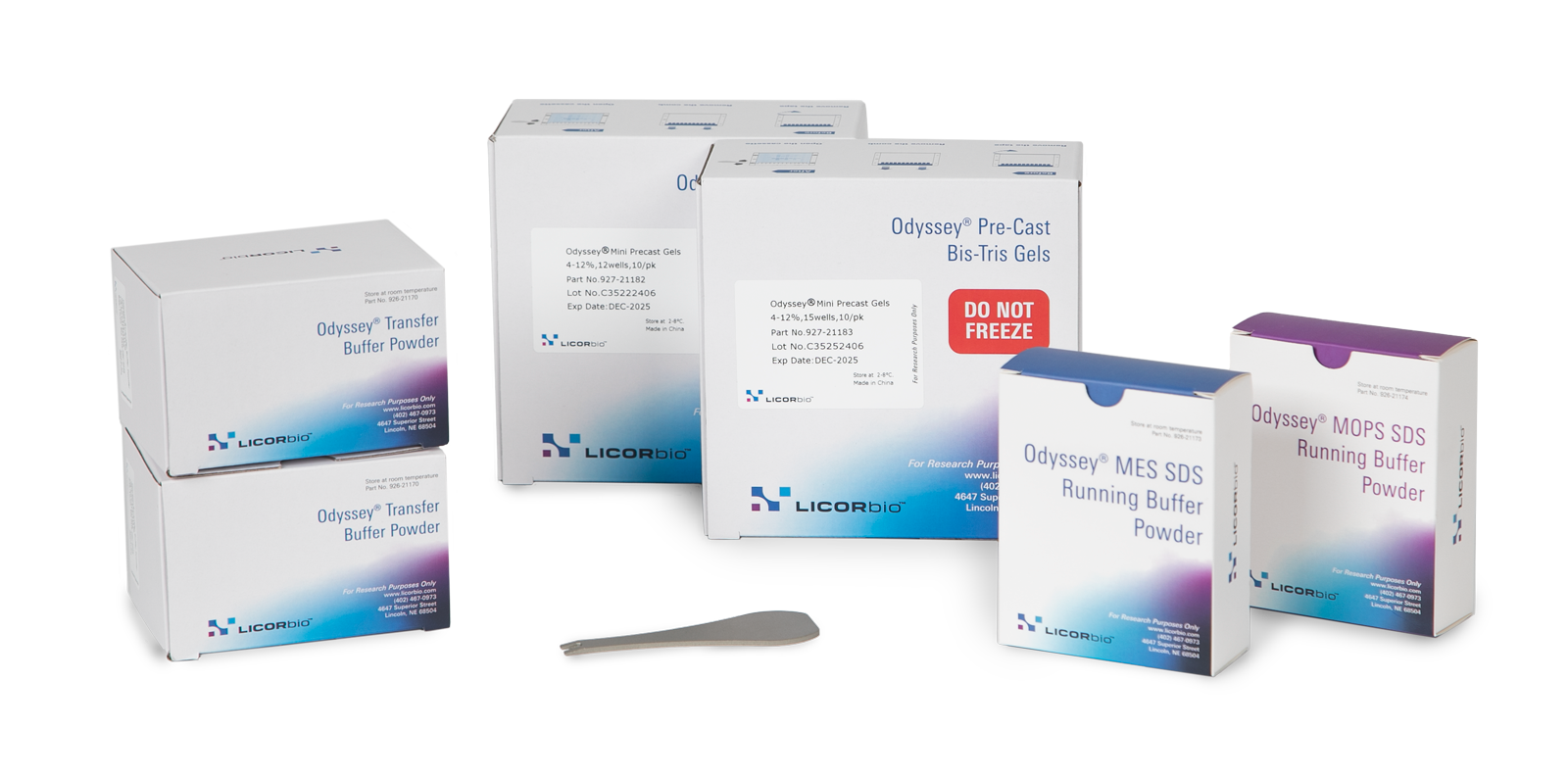Protocol for Quantitative Western Blots
Choose a Normalization Strategy
Tip: Make sure you detect your sample and your loading controls in the linear range.
Prepare Samples
Tip: Determine protein concentration with an assay.
Perform Electrophoresis
Tip: Monitor migration with a pre-stained molecular weight marker.
Transfer to Membrane
Tip: Use the right membrane to minimize background, and validate whether your protein binds best to nitrocellulose or PVDF.
Block
Tip: Optimize blocking conditions by comparing a minimum of three different blocking buffers to find the best blocker to fit your experimental needs.
Incubate with Primary Antibodies
Tip: Validate that your antibodies recognize the correct protein target and don’t cause non-specific binding before you begin.
Get personalized publications report specific to your target
Wash
Tip: Clean incubation boxes with methanol before you use them to prevent contamination.
Incubate with Near-Infrared Fluorescent Secondary Antibodies
Tip: Eliminate cross-reactivity on multiplex Westerns with highly cross-adsorbed secondary antibodies, like the IRDye® Secondary Antibodies.
Wash
Tip: Use freshly-made buffers to prevent contamination.
Detect with Odyssey® Imaging System
Tip: Use a detection system with a wide linear dynamic range, like the Odyssey® Imaging Systems.
Analyze with Empiria Studio® Software
Tip: Let Empiria Studio Software handle the background subtraction method.
Infographic Overview of the Concepts Behind Empiria Studio Workflows
